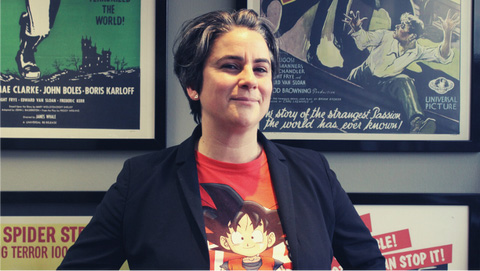By Esther Duran, Chief Design Officer at Zone
Banking has undergone something of a mini revolution in the past five years. One of the oldest sectors in business has had a 21st century makeover and long gone are the days where the banking experience solely applied to bricks and mortar branches.
Where legacy players, such as Lloyds and Barclays, once contested for real estate on the UK’s high streets, the new battleground is on digital platforms. Challengers such as Monzo, Revolut and Starling have shaken up the industry in recent years with their rapid growth.
Sustainable digital design
However, simply becoming ‘digital’ and ‘convenient’ is not just what consumers are demanding. More and more, customers are only choosing to engage with businesses whose purpose reflects their own values – with ethical and sustainable issues at the top of their agenda. The most recent Trust Barometer by Edelman clearly shows that businesses are now the most trusted institutions worldwide and therefore expected to show strong societal leadership. So, whilst banks are now increasingly engaging with customers online, it’s important they understand the role that sustainability should play in the process of designing and developing these services.
Recent data found that there are more than 14 million mobile app users across Lloyds Bank, Halifax and Bank of Scotland – a figure which rose by one and a half million during 2021. This is representative of the scale of investment in these services, while banks all race to level up their digital offerings and increase paperless transactions across their core offers. But how they are designed can outdo the sustainable ambitions that have been set out.
Environmental, social and governance issues (ESG) have been placed at the top of agendas as they become closely associated with good banking practices. Banks are under pressure to prove they are aligning with the pledges they set rather than simply seen to be ‘greenwashing’ – and design is a large element of this as further digitisation continues.
Therefore, companies must ‘bake in’ sustainability and responsibility measures from the outset of the design process, not just as an afterthought to avoid wasteful energy consumption and poor user experience. This brings together purpose, design, strategy, innovation, and technology to solve human problems without negatively impacting the environment. Simple and sustainable design features can have a quick and direct impact – for example, a bank could include things like giving app users options about the colour of their background – a white background might look better, but a dark background uses less power. Communicating this can not only encourage more sustainable behaviour but educates the customer and brings them on the journey.
This journey must also feel inclusive. Educating people on new digital processes that may be quite different to what they are accustomed to is an area banks are pouring investment into. Barclays Digital Eagles is a good example of a legacy bank investing in an inclusive digital future, as it helps people of all ages learn important digital skills, including new ways in which they can bank. While it’s becoming increasingly more common for younger generations to deal less and less with physical money, banks should be careful not to neglect customers who have more traditional behaviours, designing sustainable experiences that guide and reassure them. And learning about a bank’s efforts to be sustainable via its sustainable digital experience is even better.
The importance of ‘dataversity’
While it’s great that banks are investing in impressive, functional apps, just as important are the bits that customers can’t see.
Data management is a key part of sustainable design, and it’s important to consider it across the whole end-to-end journey of digital banking. Digital transformation increases reliance on data centres, which have an extremely high environmental cost – in fact, recent research found that they are responsible for a staggering 0.3% of all CO2 emissions worldwide. Especially when you consider the fact that deleting 30 emails can save 222 Wh, which is essentially the same as leaving a low energy light bulb on all day, you can imagine the scale of the electrical cost of banks storing masses of data.
To save money, businesses often look towards developing countries where it’s cheaper to store, but these still demand a high amount of water and energy to power them. This relates to the idea of ‘dataversity’ – businesses have a responsibility to understand where their data centres are, and banks should ensure they are with suppliers who take this seriously. Although digital is abstract, we need to understand the full end-to-end process, and this applies to both legacy banks as well as newer neo banks.
It’s never been more important for banks to make better decisions and listen to what the consumer expects from them. By embedding sustainable design into its strategy, communicating its efforts, allowing the consumer to feel a part of the journey and ensuring they are inclusive in its services means it not only can have a long-lasting impact in the ongoing climate challenge but safeguard its reputation as a company committed to doing good.


